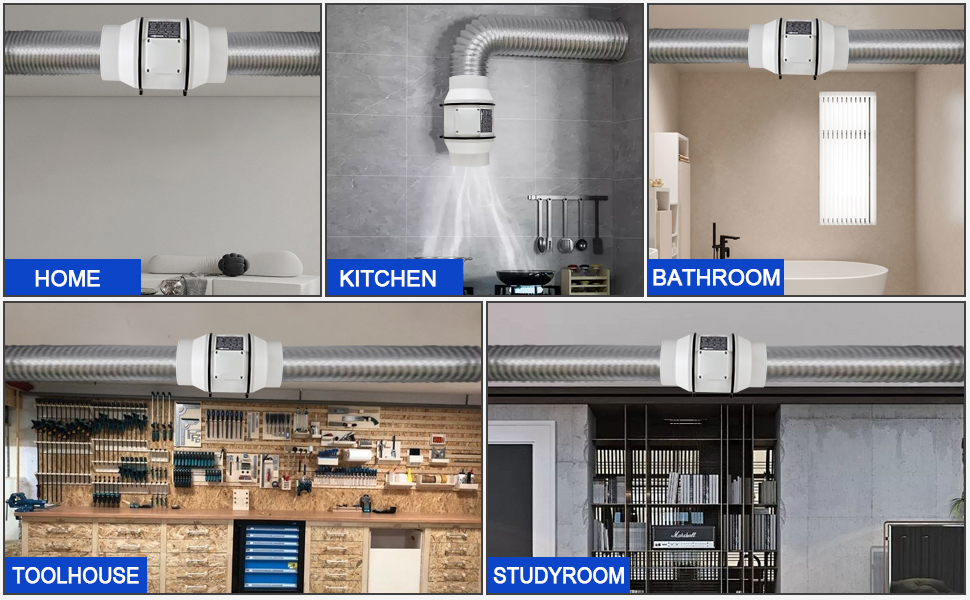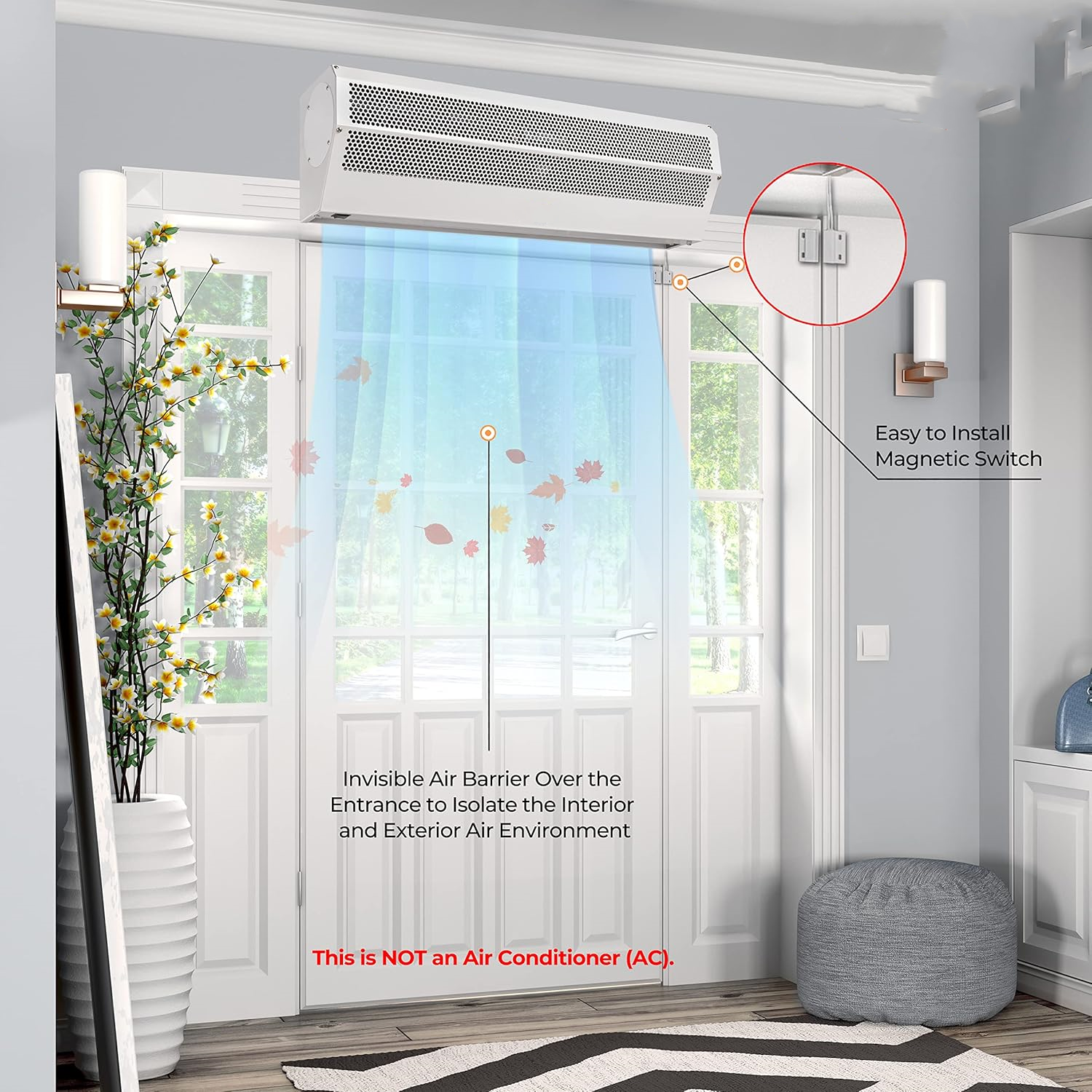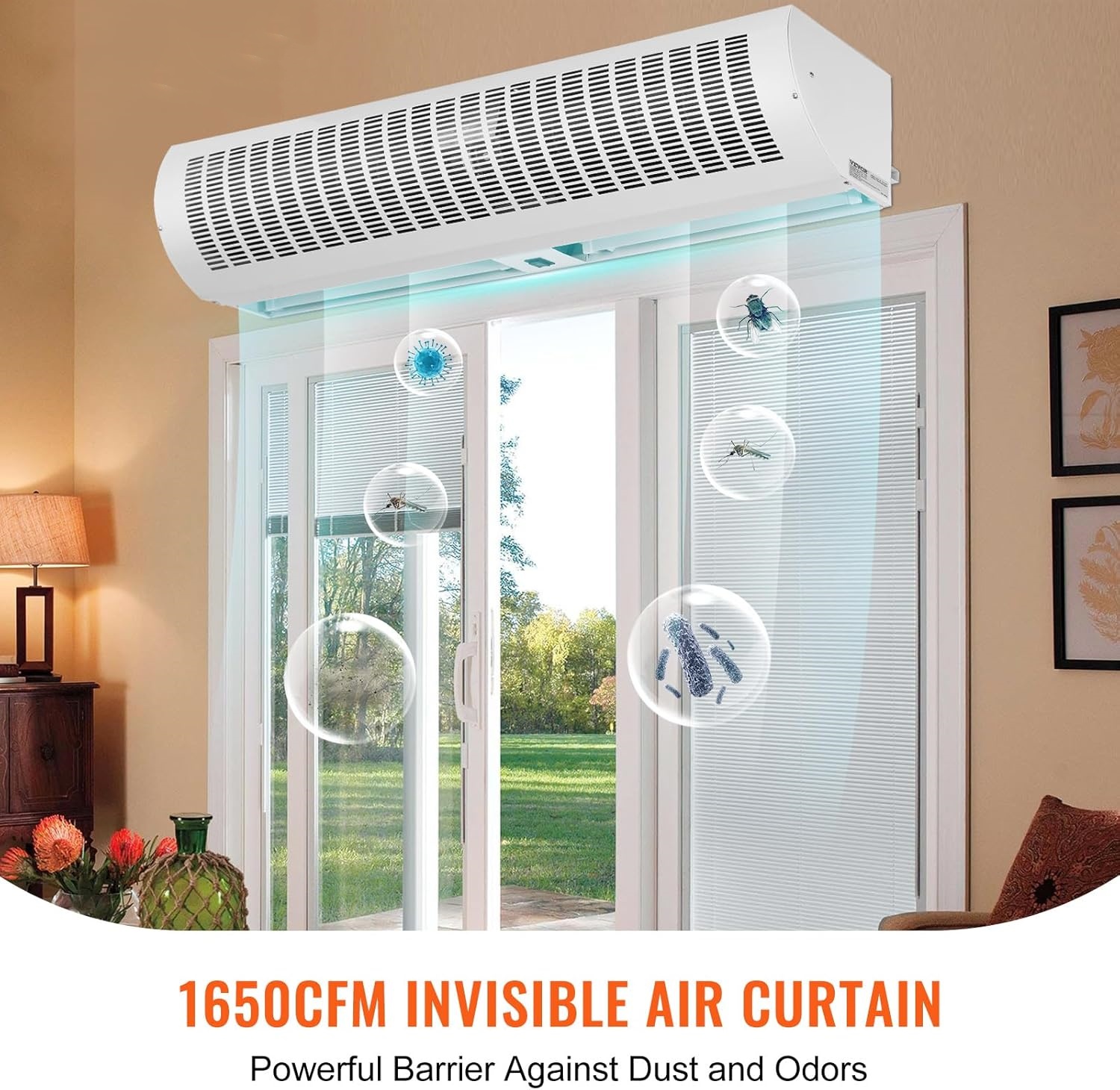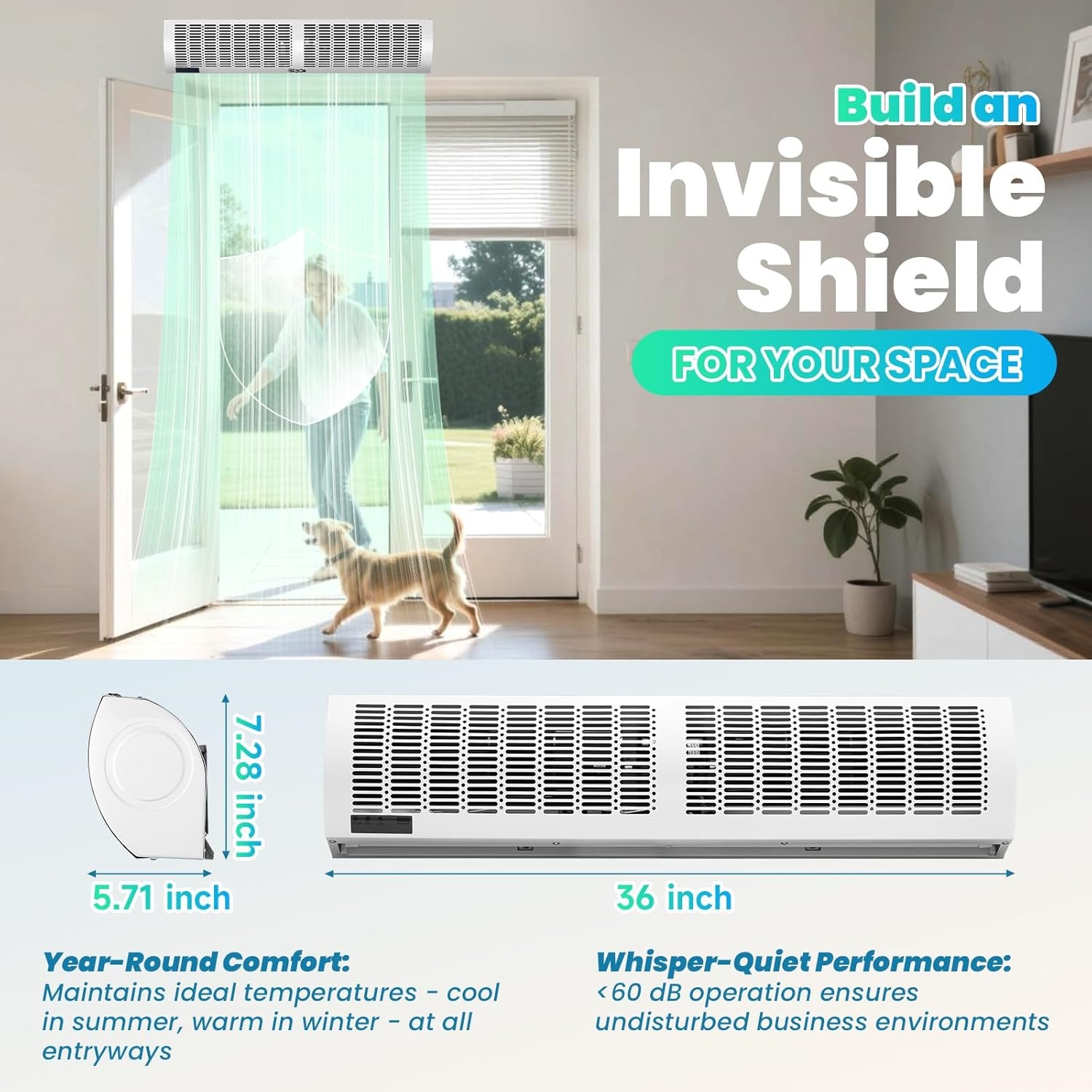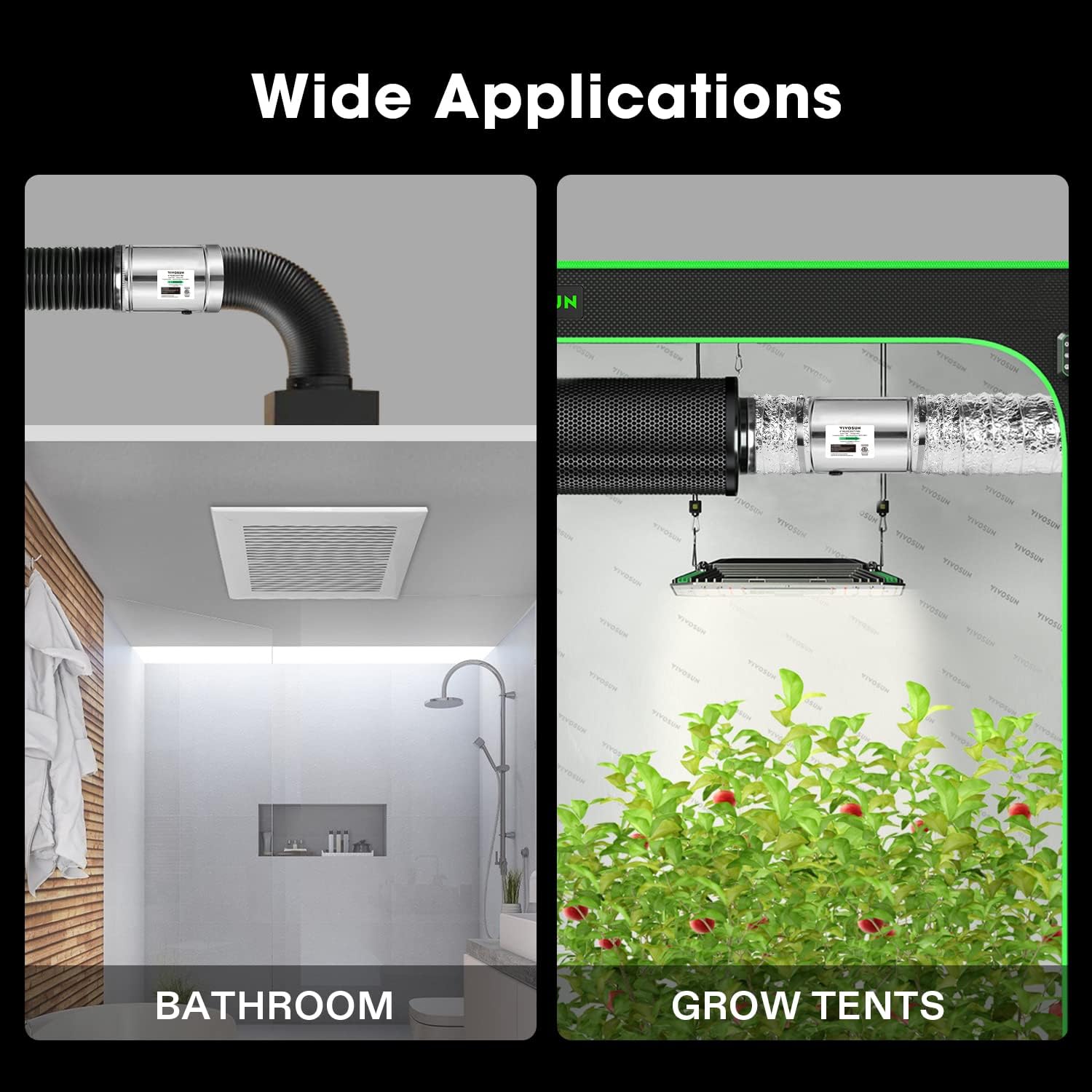The important role of inline fan fans in modern ventilation
Effective air circulation is essential for maintaining a healthy and comfortable indoor environment. Inline pipe fans are a key component in achieving optimal ventilation, working carefully in the pipes to effectively move the air. Whether you want to improve air quality in your home, office, or a dedicated business space, it’s key to know how these versatile fans work and how to choose the right one. This guide will take you through everything you need to know about these ventilation boosters, from their basic features to selection and installation.
Learn what fans of inline fans do

As the name suggests, the inline fan is installed directly, directly in the part of the pipe. Unlike visible ceilings or wall-mounted fans, these devices are often hidden, making them an excellent solution for spaces where aesthetically important or direct ventilation points are impractical. Their main function is to lift the airflow through the pipes, helping to absorb old, humid or polluted air and bring fresh air in. They can be used to complement existing HVAC systems or as a standalone solution for specific ventilation needs. For example, they are efficient as inline exhaust fans in bathrooms, kitchens, or workshops, removing moisture, odors and contaminants from the source. Many modern designs prioritize quiet operation, making quiet inline tube fans a popular choice for residential applications focusing on noise levels.
Key Benefits of Installing Inner Ventilation Boosters
There are many advantages to incorporating this ventilation unit into your strategy. First, they significantly improve indoor air quality by promoting old indoor air from fresh outdoor air. This is especially beneficial in tightly sealed modern buildings where tightly sealed modern buildings may be restricted. Second, these fans are ideal for controlling moisture, especially in areas where it is prone to occur, such as basements, crawl spaces, and bathrooms. By removing damp air, they help prevent mold growth and associated structural damage. Third, they effectively eliminate odors, smoke and air pollutants, creating a more pleasant and healthier environment. For those who need strong air movement, a high CFM inline fan (cubic feet per minute) can solve larger spaces or higher ventilation requirements. Additionally, certain types (such as centrifugal inline fans) are designed for higher pressure applications and can effectively handle longer or more complex pipeline operations.
Choose the right inline tube fan for your needs
Choosing the appropriate ventilation booster requires several factors to consider to ensure optimal performance. 1. Airflow Capacity (CFM): Determines the space you need to ventilate and the air change (ACH) required per hour. This will help you choose a fan with the correct CFM rating. High CFM inline fans are suitable for larger areas or applications where fast air exchange is required. 2. Pipe Size and Type: The fan must be compatible with your existing or planned pipe diameter. Using a fan that is too small or too large will not cause the pipe to be inefficient and noise. 3. Noise level: Especially for residential or office environments, quiet inline fan fans are required. Check the single rating of the fan - the lower the single value, the quieter the fan. 4. Application: Consider specific uses. For a residential bathroom or kitchen, a standard in-line exhaust fan may suffice. However, for larger buildings or specific industrial processes, a commercial inline duct fan or industrial inline duct fan will be required, with stronger structure and higher performance features. Inline tube fans designed for durability are key when considering these options. 5. Static Pressure: If the pipe is long, with many bends or combined with filters, the fan will need to overcome higher static pressure. Inline fans of centrifugality are generally more suitable for these situations than axial fans. 6. Energy Efficiency: Find models with energy-saving motors to save electricity costs over time.
A simple guide to installing an inline tube fan
Although specific installation steps may vary by model and local building code, here are general guidelines for installing ventilation units. Always give priority to safety and consult manufacturer instructions. If you are not sure, it is recommended to hire a qualified HVAC technician or electrician. 1. Plan location: Determine the most effective location of the fan. This usually means putting it as close as possible to stale air sources for exhaust applications or strategically to increase airflow in an existing system's HVAC inline fan setup. Ensure access to future maintenance. 2. Collecting tools and materials: Fans, proper ducting, fixtures, mounting hardware, wiring supplies, as well as basic tools such as drills, screwdrivers and wire strippers are usually required. 3. Cut pipe (if refurbished): If installed into an existing pipe, carefully measure and cut a portion of the pipe to accommodate the pipe fan. 4. Install the fan: Use the provided bracket or belt to securely install the fan. Make sure it is correctly directed to the desired direction of airflow. Some fans have arrows indicating airflow. 5. Connect the pipe: Use clamps or tape to connect the pipe to both ends of the fan to ensure a seal is sealed. Poor seals can lead to huge performance losses. 6. Wire: This is the most critical step. Turn off the power on the circuit breaker before starting any electrical work. Connect the fan according to the manufacturer's diagram and local electrical code. This may involve connecting to the switch or being wet. 7. Test the system: Once connected and ensure everything is secured, restore the power and test the fan to make sure it is running correctly and move the air as expected. Check for any abnormal noise or vibration.
Keep your pipe-mounted fans alive
Proper maintenance will ensure that the fan installed on your pipes operates effectively and lasts for many years. Check regularly for any dust or debris accumulation on the fan blades and housing. Clean it gently with a brush or vacuum cleaner - always disconnect the power before cleaning. Check that the pipe connections remain safe and dense. Listen to any changes in the sound, as abnormal sounds may indicate problems with the motor or bearing. For commercial or industrial inline duct fan units, more frequent inspections may be required due to their larger use. Regular maintenance not only extends the life of the fan, but also maintains its efficiency, ensuring you continue to benefit from improved air quality and ventilation.
Conclusion: Effective ventilation is easier to breathe
An effective ventilation device (such as the device discussed) is a powerful but often invisible hero that maintains a comfortable, healthy and energy-efficient indoor environment. From simple boosters in your bathroom to powerful commercial inline tube fans in large facilities, these units play a vital role. By understanding their benefits, choosing the right model, such as a quiet inline tube fan for your home or a high CFM inline fan for more demanding tasks and ensuring proper installation and maintenance, you can significantly improve the air quality within the space. Investing in quality fans is an investment in your comfort and well-being.

